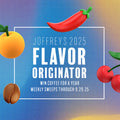Coffee
The Top Five Ways to Brew Coffee
- French Press -- This lovely device is both simple and elegant in operation, but allows for a vast array of strength and flavor. Instead of dripping water through the coffee that sits in a filter, a French press mixes the coffee grounds and the hot water together to brew for a few minutes. Then, a metal filter is pressed down inside the brewing cylinder to push the loose grounds to the bottom, leaving the coffee in the cylinder to pour. You should use a coarser grind of coffee, as finer grounds will slip past the filter. With the French press, you also have more control over the temperate of the water. Water should be between 195 degrees and 205 degrees F, depending on the bean, and never be allowed to boil for more than a second or two. While drip coffee makers serve up coffee at the same temperature every time, this machine heats the water separately at first, so you can make it hotter for some blends, and cooler for others. Now, some people complain about the potential for more coffee residue in your cup, but the upside of that is the French press retains more of the coffee's natural oils -- which means more real coffee flavor for you!
- Drip Coffee Maker -- For those of us who are not morning people, we can often fall into the trap of not being awake enough to make really good coffee until after we've had our coffee. At 5:30 a.m., that simple quandary is enough to make some folks go back to bed. Enter the drip coffee maker and it's primary value -- it's automated. Today's automatic drip brewers have so many features, they can do everything except drink it for you. Some drip machines have a built in grinder for fresh beans, and most all of them have timers so you can set your machine for the morning and wake up to the smell of fresh-brewed java. Of course, this is not the gourmet way to prepare coffee, but it is the most convenient. It's also good for those whose tastes lean toward a lighter flavor, and there is something to say about the fact it keeps the coffee warmer longer. Here's a tip to keep your drip-brewed coffee tasting fresh -- clean the unit with white vinegar on a regular basis. If clears out the residue build up to preserve a consistent flavor.
- Single-Serving Coffee Makers -- But what about those families who have only one coffee-drinker? Are they doomed to making a whole pot of coffee, only for most of it to go to waste? Or worse, must they go without? The advent of the single-serving coffee maker was an advance that was almost instantly embraced by coffee-drinkers everywhere. Not only can you have a single cup at a time, but you can have a different flavor every time, too. The drawback seems to be that the pre-measured cups or pods can sometimes produce a weaker cup of coffee than other methods, but there are now reusable cups that you can measure yourself. The ease of use and convenience are the strong points, but those little pods can get expensive. The best way to go with these brewers is to get a few of the reusable cup or filter and buy your coffee by the pound.
- The Pour-Over -- This is a hand-delivered version of traditional drip-brewed coffee, with a twist. In this method, you use a device called a dipper, which is basically a funnel that holds a paper filter over a coffee pot. You heat the water in a kettle to the almost-boiling point, and then pour it over the coffee grounds sitting in the filter. With traditional drip coffee makers, the water sits in a plastic reservoir before it is heated and pumped through the machine. Some aficionados complain they get a plastic taste from that process. The pour-over ensures the water touches only the glass containers, the filter, the coffee and your cup. You can't keep the coffee heated, but those who prefer this method like the more natural taste and convenience of not having a huge coffee machine on their counters.
- Percolator -- This is how mom and dad and their moms and dad made coffee. YouTube a few 1970s coffee TV commercials, and you'll see percolators inaction. These old school pots are usually made of metal, and heat the water and bubble it up through a pipe and over the coffee grounds, collecting the finished product in the original water reservoir. For generations, the bubble noise was the signal for the rest of the house that it was time to wake up. Largely gone but not forgotten, these coffee makers can still be found online and in thrift stores.
- BONUS METHOD! Cowboy Coffee -- Campers know how to make this kind, and it's pretty simple. You simply get a metal pot and boil the coarse coffee grounds with the water. Will a few of those grounds make it into your cup? Sure, but after sleeping in a tent or a sleeping bag, any coffee is good coffee!






Leave a comment
Please note, comments must be approved before they are published.